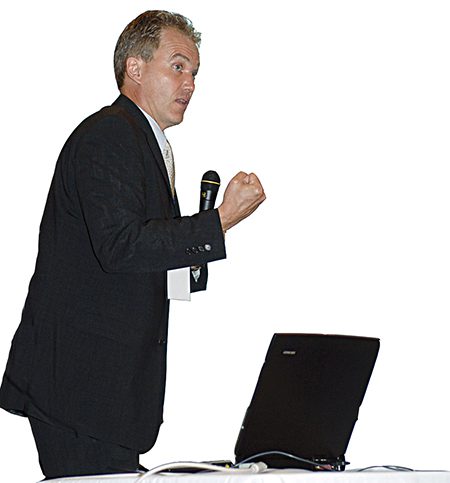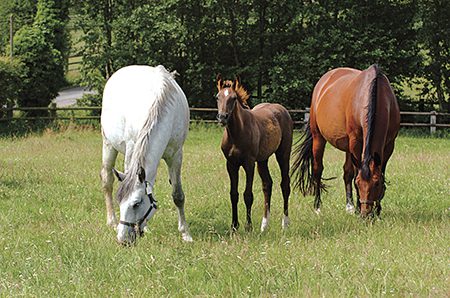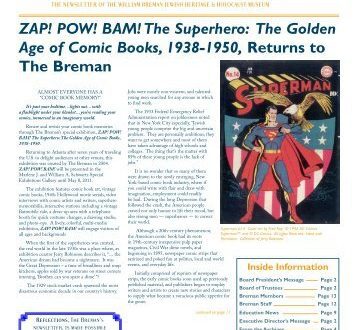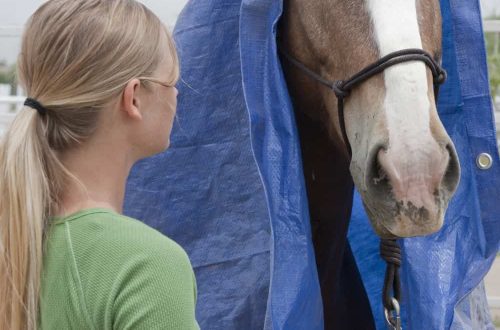
How does a horse “work”?
How does a horse “work”?
Gerd Hauschmann is unique in his own way – he is a veterinarian, but also a professional horseman. This article is written on the basis of his report, read at the FEI Dressage Seminar. About the work of the joints of the horse, its hooves and not only …

I would like to talk about joints. Of course, I could talk about the lungs or the heart, but it is the work of the joints that will help me best illustrate what I really want to talk about.
What do we need to form a joint? We need at least two bones, a joint capsule, cartilage, and joint fluid.
The question arises: how do the cells of the joint receive nutrition? Blood? But some body tissues do not have a direct blood supply, such as cartilage and tendon tissue. As many of you know, if you take a small piece of cartilage and put it under a microscope, you can see many large round cells. Living cells that take on all the stress that our sports horses experience. It would seem that dressage horses do not carry excessive loads, but they are the ones who have the greatest joint problems.
So where does cartilage get its nutrition from? There are only two sources. First, it comes through the bone. Another source is synovial fluid.
Now the next question is: how can we transfer something into this smooth elastic fabric? The so-called “vacuum” principle will operate here. When the horse steps, the cartilages are adjacent to each other, they are pushed together. When the horse pushes the leg off the ground, the cartilage separates, creating a vacuum in the joint, and the cartilage thus absorbs beneficial nutrients.

Look at the wild horse. She is on the move 19 hours a day. Cartilage nutrition is ideal. Closing, suction, closing. This is how cartilage lives. Now think about the “stable” horses. Twenty-three hours in a stall. This is what makes veterinarians rich! The horse is made to move. Dressage trainer Jean Bemelman says he takes his horses at least three or four times a day…
We veterinarians get bоMost of our income comes from the problems associated with poor riding and the constant keeping of horses in the stables.
What is the first sign that something is wrong with the cartilage in the joint? What would you do in place of the cartilage if the level of nutrition was low – not enough food? Increase the pressure in the joint and you get the problem – pouring. Absolutely “suddenly”.
If you ask young professional riders where the pours come from, they will give you a lot of ideas of varying degrees of originality – the wrong diet, whatever … But these problems come from a lack of movement, because the horses spend too much time in the stable.
Make the veterinarians beggars – get the horses out of the stables!
Now let’s look at the hooves. Most people are aware of the bony structure of the hoof, the metacarpal, the first, second, and third phalanxes, the navicular bone, and the sesame bone of the hock.
Pay attention to the tendon-ligamentous apparatus that supports the fetlock joint. It is supported by a suspensory ligament (third interosseous muscle) attached to the metacarpal and sesamoid bones at the top, and by distal ligaments. This whole system supports the fetlock joint. If we cut it, then everything will fall down – you can observe a similar picture in old queens, when their fetlock is parallel to the ground and lowered down, the pastern sags.
Now consider another tendon system – the deep digital flexor. It goes around the sesame-shaped bone behind the fetlock, descends down to the navicular bone, and is fixed on the third phalanx.
Once we have an idea of the structure of these systems, we can look at what I think is the biggest problem with sport horses in Germany. Consider how they are “shod”.

Ligaments, tendons and bones of the lower limb: пclear bone, common digital extensor, first phalanx, second phalanx, third phalanx; superficial digital flexor, deep digital flexor, suspensory ligament (third interosseous muscle), sesamoid bone, deep distal ligament, middle distal ligament, superficial digital flexor, lateral cartilage, navicular bone.
How do we want to distribute the horse’s weight? Evenly. What do we need to ensure that the weight is evenly distributed? Flat leg support. In order for the load to be distributed correctly and evenly, toWhen the horse is walking, his foot should be on the ground with his toe and heel at the same time. What happens when you start changing this balance? Many forgers do orthopedic forging, not knowing how and why. Without thinking, they cut off their heels and flatten their hooves. What happens to the deep flexors? There is even more pressure on the navicular bone, the deep digital flexor is under tension, the fetlock joint is pushed forward and the suspensory ligament begins to sag. Note, of course, that European forgers prefer to raise their heels. Thus, the deep digital flexor is in a relaxed state, there is no pressure on the navicular bone, the entire tendon is actually released from pressure, and all the weight is on the suspensory ligament. Many horse owners are satisfied that the farrier arrives, takes the horse from the stall, takes off its shoes, cuts its hooves, puts on shoes and leaves. They do not think about the fact that before proceeding with the trimming and especially forging, it is necessary to look at the horse in motion. How else can you find out exactly how the horse puts his foot? What is the best thing to do to help her evenly distribute the weight across all the structures?
If the horse is having suspensory ligament problems, simply lifting the heels will not help. Sometimes you find a veterinarian who recommends lifting the heels to fix ligament problems, I don’t know why they do that.
To understand how the lower limb of a horse works, let’s look at it in a longitudinal section. There is a small capsule in the hoof. You can see other components in it – the phalanx, the navicular bone, the digital flexor, the lateral cartilage. What is the function of the ulnar cartilage? This is a pump that is responsible for blood circulation, it also refers to the load-bearing elements of the hoof. To perform these functions, well-developed lateral cartilage and a hoof are needed.
Let me tell you a little story about what got me thinking about hooves… Who seems to be interested in hooves? I’d like to focus on riding, but I’ve found that a lot of the problems come from the hooves. But it’s as easy to take good care of your hooves as it is to approach riding with the right principles.
When the horse evenly (with the whole sole) puts the hoof on the ground, then the same pressure is applied to the frog, from the frog the pressure passes to the lateral cartilage, it expands the hoof in the heel area and ensures its good condition.
Many years ago I was at the US Veterinary Congress and an old farrier shared with me a diagram of hoof symmetry. He did research on the wild horses of the Rocky Mountains. In autumn, the herd is driven down, the stallions are castrated, they are driven in and sold, and the queens are returned back to the mountains. The presentation began with a video of hundreds of horses descending from the mountains galloping over the rocks. At the same time, nothing happened to their hooves. Then we saw that they all have big round hooves with low heels. I have never seen such big arrows…
It was then that I began to think that every tissue responds to external influences. Now the equestrian infrastructure in Germany has changed a lot, but even 10-15 years ago our foals were born in winter, in snow, cold, wind, rain, so at first they were all with their mothers on a high soft straw pillow.

They spent the first weeks, sometimes months, in the stable. If they were lucky, they were let out to run in the deep mud! If you rode through the stables in the spring, you would see beautiful, strong foals with big muscles and beautiful necks … standing on small hooves with high heels and inconspicuous frogs.
Think of a small navicular bone: how can it develop if there is no pressure?
Let’s say we can’t change the conditions in our levadas, but we can change what we do with our horses during the winter. Horses usually live on the plains. Look at wild horses or zebras. They move on dry, hard ground. Our foals are born on soft ground, then knead soft mud, and then go to soft meadows with tall grass. We feed them like we want to afterward to eat . They always look great, but how can we expect strong hooves from them? On soft ground?
Take x-rays of a typical warm-blooded three-year-old and you will see a dark picture, the bones are dark. Take the same x-ray of a thoroughbred racing and you will see that her bones are white in the picture. This means they are full of calcium! The bone wall of a thoroughbred is twice as thick as that of a warm-blooded horse. If you let your horse’s skeleton form on hard ground, uneven ground, if you don’t start cutting off the heels of the foals, you’ll get great healthy legs! We forget that the horse came from the plains. This is especially true for dressage riders. Horses work in bandages on fine soft ground, especially young horses. But everything should be exactly the opposite. The leg of a young horse should respond to external stimuli and be in contact with hard ground daily (if this is not possible, then at least three times a week). When you’ve finished training, give your horse a rein and walk it down the road. Half an hour there and back. Give a horse solid ground and you will get strong hooves and strong joints, good tendons and a healthy horse. We have to train our horses on soft ground, but we don’t have to keep them on it all their lives!
I have been practicing for over 20 years and I see that the number of horses with problem spines, muscles, necks, legs, etc. is growing.
Especially many problems are caused by the spine, the vertebrae of which constantly rub against each other. When I was a rider, I thought it was the riders who caused this problem, especially those who use slip reins. I decided to become a veterinarian and during my first “practices” I encountered three-year-old horses that had never been worked under saddle and came straight “from the fields”. At the same time, they had problems with the spines, from the withers to the sacrum, along the entire length. How could this happen? It’s impossible!
Maybe the commission that licenses the stallions is to blame? Perhaps a stallion with problems in the exterior accidentally got into breeding? Or is it the breeder’s fault? I really couldn’t understand anything. Seven or eight years ago I started giving anatomy workshops in Warendorf for our young professional riders. I explained to them the front-down principle for young horses, what happens to the occipital ligament that lifts the back. Then I wondered what happens to our young horses during their first three years of life?
We try to grow them very intensively. I always compare them to young zebras. A young zebra that is hungry moves from one patch of grass to another. A little grass here, a little there, and so on. This means that for hours and hours and hours, the young zebra constantly lowers its head to the ground and raises it back up. We fill our young horses with oats, we give them a lot of grass in reptuha. It is enough for them to spend half an hour eating, and they fill their stomachs. The time our horse spends grazing with his head down is not enough to build a strong and functional back. On the other hand, the intensive two-year horse rearing system brings us many problems. I believe that less is better. There are many desert areas here in Australia: if you send a young horse there, you can be sure he will come back with a developed back. Intensive feeding of yearlings, two-year-olds, and especially three-year-olds that we want to put up for sale, aimed at improving their appearance, is a bad practice. We get heavy, overdeveloped 2,5-year-old stallions that come for licensing. They eat up to 10 kg of oats a day, they look good, but they have problems with their spine because they have not been able to spend their days with their nose down to the ground.
What can I say in the end? If you have purchased a young four year old dressage horse, by providing proper hoof care, attention to antiparasitic procedures, regular work on hard ground, and a healthy back as a priority, you will be doing the right thing!
Translation by Valeria Smirnova (a source)





